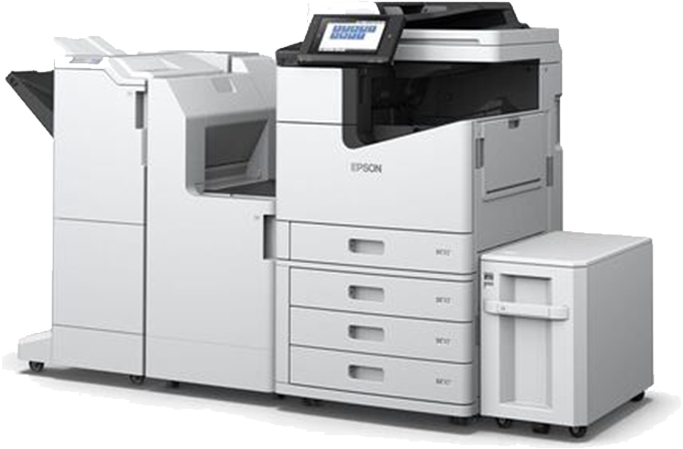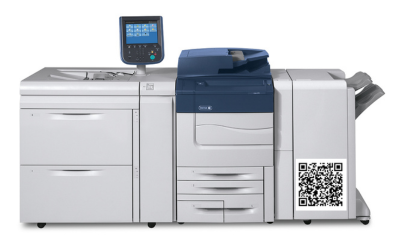Copier And Printers Buy
When you’re in the market for a new copier or printer, it’s crucial to make an informed decision. You’re not just buying a piece of equipment; you’re investing in a tool that can increase your productivity, streamline your workflow, and bolster your business’s efficiency. So how do you choose the right one?
It’s a question of understanding your needs, comparing functionalities, evaluating costs, and considering how it will integrate with your existing systems. It’s not just about the price tag or the brand name; it’s about finding a solution that fits seamlessly into your operations.
So, let’s delve into the nitty-gritty of copiers and printers, unravel their technical specifications, and guide you in making a purchase that you won’t regret. Whether you’re a small business owner or part of a large corporation, this guide is tailored for you. Because in the end, we all want to belong to the club of smart, satisfied buyers.
Key Takeaways
- It is important to make an informed decision when buying a copier or printer, taking into consideration specific needs and volume of printing or copying tasks.
- Factors such as space requirements, user-friendliness, functionality, print quality, durability, ink consumption, speed, efficiency, energy consumption, and waste management should be considered when comparing different options.
- Costs of maintenance, supplies, ongoing expenses, initial purchase price, financing options, and compatibility with existing systems should also be evaluated.
- Selecting a reputable vendor with good customer service, ensuring after-sales support, and considering long-term costs and total cost of ownership are crucial aspects to consider before making a purchase.
Understanding Your Needs
Before you dive into buying a copier or printer, you’ve got to understand your specific needs. Visualize your daily operations and the volume of printing or copying tasks your business handles.
Not all copiers and printers are created equal, so your choice should carefully consider your space requirements and user friendliness analysis.
Think about your workspace. Will a large, multi-function device fit comfortably, or would a compact standalone unit be more suitable? Remember, an ideal machine should complement your work environment, not disrupt it.
Likewise, consider the user-friendliness of the machine. A machine with complex functions can slow you down if your team isn’t technically inclined. Analyze the ease of use, the setup process, and the accessibility of customer support.
By understanding these needs, you’re one step closer to finding the perfect fit.

Comparing Functionality of Copiers and Printers
As you delve deeper into the world of copiers and printers, it’s crucial to consider not only your specific needs but also the functionality of these machines.
You’ll want to scrutinize the print quality, ensuring your documents and images are sharp, clear, and professional.
Additionally, don’t overlook the importance of speed and efficiency – a fast, reliable machine can significantly improve your productivity and streamline your workflow.
Analyzing Print Quality
You’ll be blown away by the crisp, vibrant colors and sharp text that a high-quality printer can produce, truly bringing your documents and photos to life. The print quality is not only about the visual appeal, but also about print durability and ink consumption.
A printer with high print durability ensures that your prints, whether they’re precious family photos or important business documents, stand the test of time without fading or smudging.
On the other hand, ink consumption is a crucial factor to consider. A printer that uses ink efficiently can save you money in the long run, without compromising on the quality of the prints.
By considering these factors, you’ll feel confident that you belong to a community of smart buyers who make informed decisions.
Assessing Speed and Efficiency
When assessing a printing device, don’t overlook the importance of its speed and efficiency. These factors have a significant impact on your productivity and operational costs.
You need to consider the following:
- Printing speed: How many pages can the device print per minute? A faster printer can help you complete tasks more quickly and efficiently, increasing your overall productivity.
- Energy consumption: Energy-efficient devices not only reduce your electricity bills but also contribute to a more sustainable environment.
- Space requirements: Does the printer fit into your workspace without causing any inconvenience? Space-efficient models can help maintain a clutter-free workspace.
By carefully analyzing these aspects, you’ll be able to choose a printer that meets your speed, efficiency, energy, and space needs. Remember, a well-informed decision is always a wise one.
Evaluating Costs
As you delve into the world of printers and copiers, it’s essential to not only consider the initial purchase price but also the ongoing costs of maintenance and supplies. Don’t be fooled by a low upfront cost, as it’s often the expenses that come after, such as ink or toner, paper, and regular maintenance, that can really add up.
By thoroughly evaluating and comparing these costs, you’ll be in a position to make an informed decision that best suits your budget and needs.
Initial Purchase Price
Don’t let the initial purchase price of copiers and printers give you a heart attack, it’s an investment that’ll significantly enhance your business operations. However, you’re not just buying a copy machine, you’re joining a community of tech-savvy businesses.
So, when viewing the initial price, consider a few things. Start by understanding the specifications you need. High-end models with advanced features will cost more, but may offer greater efficiencies. Price negotiation is a fundamental part of the process too. Don’t shy away from it.
Explore financing options. They can reduce the initial outlay and spread the cost over time. Remember, you’re investing in a piece of equipment that’ll help your business thrive. With the right approach, you can secure a deal that fits your budget and meets your needs.
Cost of Maintenance and Supplies
Beyond the initial investment, it’s essential to consider the ongoing expenses for maintenance and supplies, as these costs can significantly impact your overall budget. The ‘supply lifespan’ and ‘maintenance frequency’ are key factors in this equation.
- Supply Lifespan: How long will your ink or toner cartridges last before requiring replacement? Higher-end models may offer longer-lasting supplies, providing cost savings in the long run.
- Maintenance Frequency: Some units require frequent servicing to maintain optimal performance, which might add up over time.
- Cost of Replacement Parts: Certain parts, like rollers or fusers, wear out and need regular replacement.
- Energy Consumption: More energy-efficient models can save on utility costs.
- Waste Management: Disposing of used cartridges responsibly can incur additional costs.
Remember, a low upfront price may not always translate to lower long-term costs.

Considering Integration with Existing Systems
When you’re on the hunt for new copiers and printers, it’s crucial to ensure they’re compatible with your existing systems for a seamless integration. System compatibility is a vital piece of the puzzle as it determines not just how well your new equipment will work with existing machines, but also how smoothly your business operations will run. Overlooking this aspect could lead to integration challenges, and potentially, operational hiccups.
Researching and understanding technical specifications is key. You’ll need to know what type of software and hardware your current systems use, and whether the new equipment is compatible. It’s like finding the perfect fit in a community where everything works harmoniously together.
So, let’s make sure your new copiers and printers belong in your business environment.
Making the Purchase
Ready to seal the deal on your new office equipment? Let’s dive into the process of making the purchase, ensuring you get the best value for your investment and a perfect match for your business needs.
- Vendor Selection: Make sure to select a vendor that’s reputable and known for their customer service. Having a reliable vendor is key to ensuring your equipment is well-maintained and operates smoothly.
- Product Specifications: Take a deep dive into the specifications of the products you’re considering. Understand their features, capacities, and technical requirements.
- Purchase Financing: Explore different financing options available. Whether it’s leasing, renting, or outright purchasing, choose what works best for your budget.
- After-Sales Support: Ensure the vendor provides quality post-purchase support. This includes servicing, maintenance, and quick response to your queries.
Remember, your perfect match is out there. Just take your time and choose wisely.
Frequently Asked Questions
What are some common maintenance issues with copiers and printers?
Common issues include ink replacement techniques and paper jam solutions. You’ll often tackle low quality prints, frequent paper jams, or improper ink cartridge installations, requiring deep knowledge and precision to rectify efficiently.
How can I properly dispose of old copiers and printers?
Explore recycling programs or trade-in options for your old copiers and printers. Many manufacturers offer these services, ensuring your equipment is disposed of responsibly while making you feel part of a sustainable community.
Are there environmentally-friendly copier and printer options?
Yes, there are eco-friendly copiers and printers that utilize eco ink usage and green energy consumption. They’re designed to minimize environmental impact while maintaining high-quality printing, making you part of the green solution.
How can I determine the durability of a copier or printer before buying?
Examine the printer’s printing speeds and conduct a thorough warranty evaluation. Durability often correlates with higher speeds and comprehensive warranties. You’re buying not just a machine, but a reliable partner in your printing tasks.
What are some common troubleshooting steps for copiers and printers?
Firstly, solve paper jams by gently removing stuck paper. For ink issues, replace cartridges timely. Understand your device’s manual for specific troubleshooting steps. You’re part of a community that values long-lasting, efficient printing solutions.
In wrapping up, it’s crucial you understand your needs and compare functionality before buying a copier or printer. Consider costs and assess system integration. Don’t overlook any detail; they can impact your productivity significantly.
Do your homework thoroughly and make an informed purchase. This way, you’ll ensure you get a device that’s not only cost-effective but also perfectly suits your specific needs.
